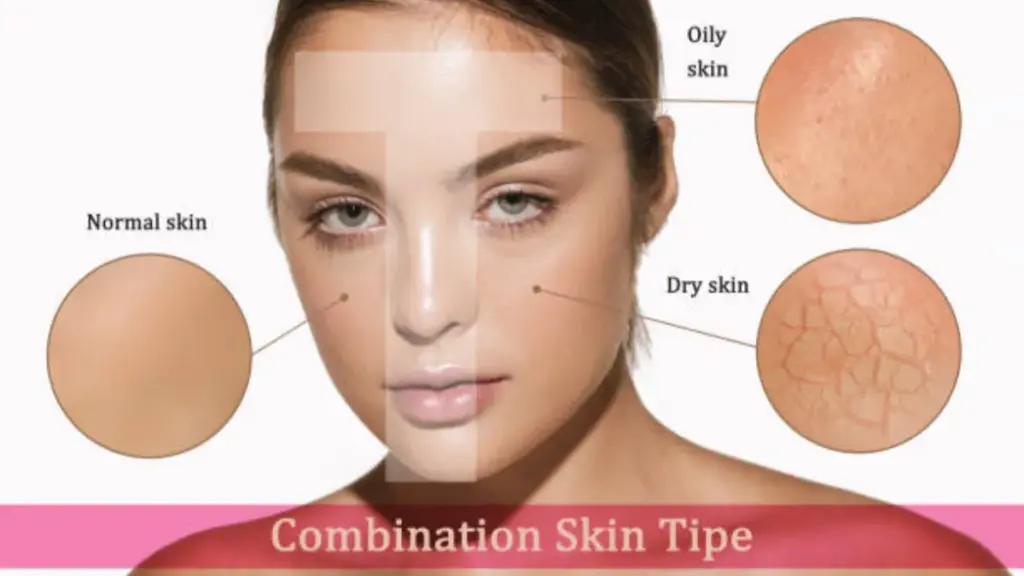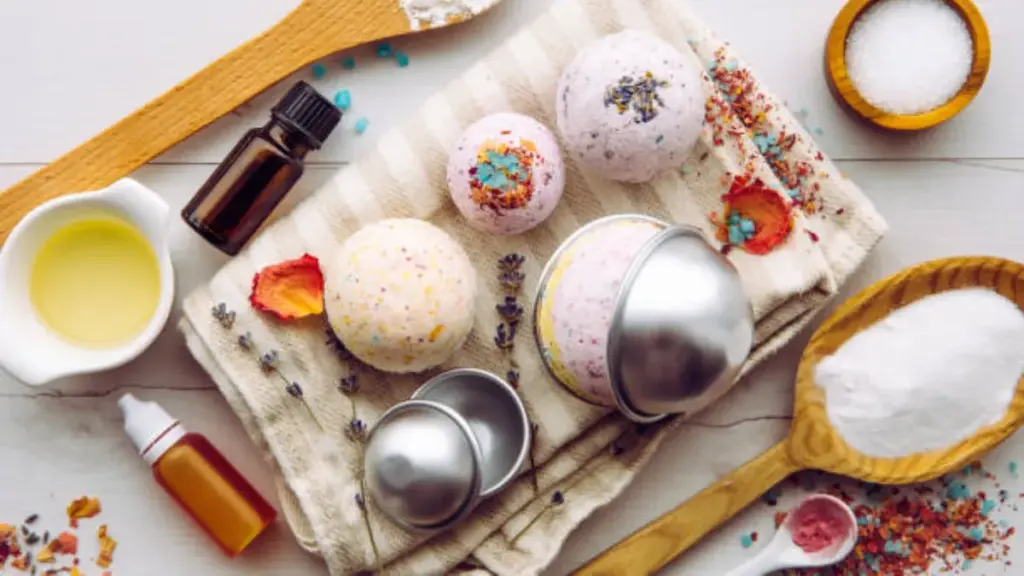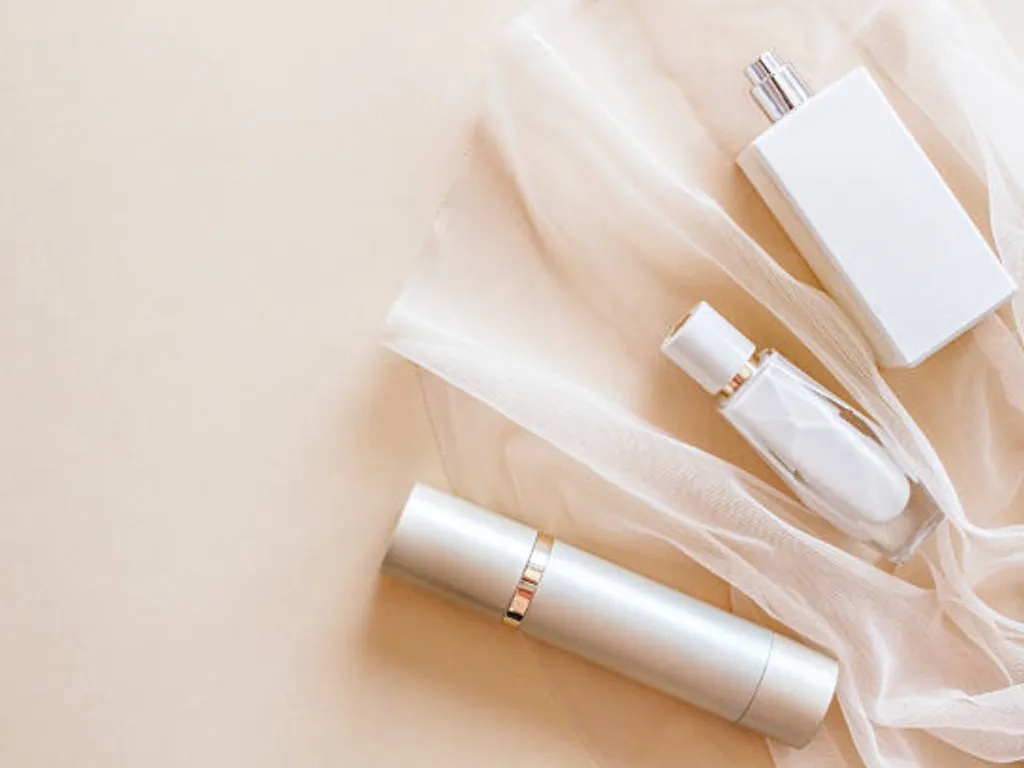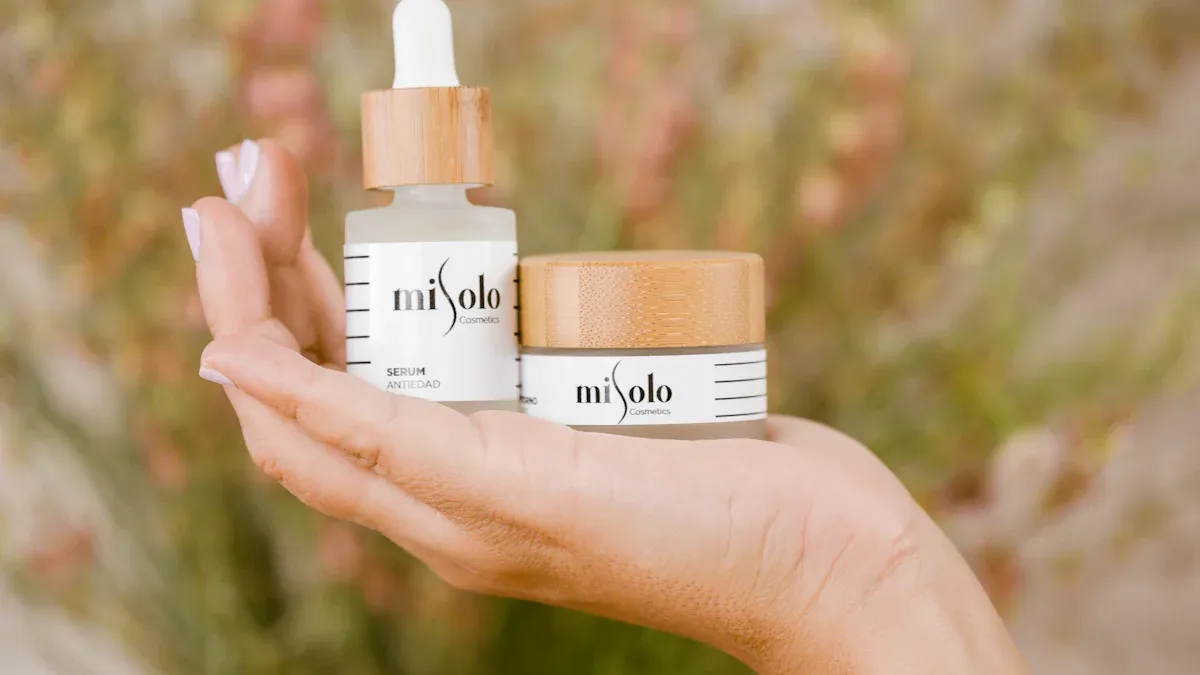
When it comes to skincare products, cohesive branding design is more than just pretty packaging. It’s the secret sauce that builds trust with your customers and sets your brand apart in a crowded beauty market. Research shows that 73% of purchasing decisions happen at the point of sale, and a well-designed product makes that choice easier. Personalised branding, like unique packaging, can deepen connections with your audience, helping them feel seen and valued. In fact, 72% of consumers expect brands to understand their interests, making cohesive branding a powerful tool for loyalty and long-term success.
Understanding Cohesive Branding Design
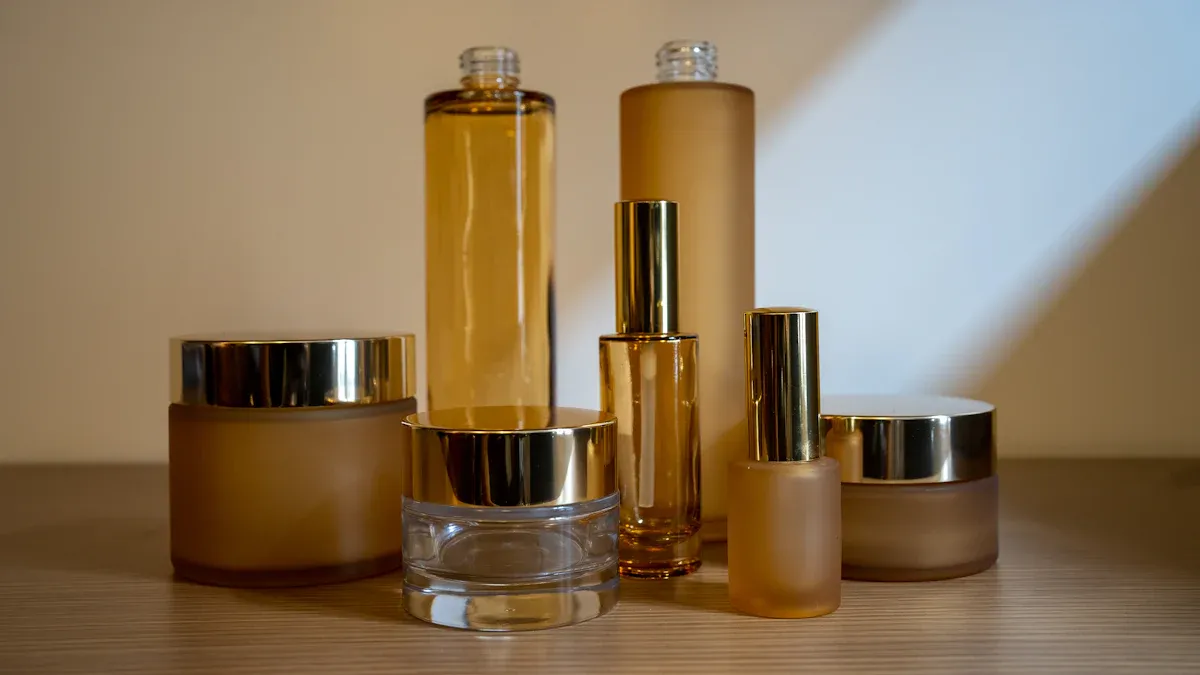
Defining Cohesive Branding Design
Cohesive branding is all about creating a unified and consistent identity for your skincare products. It ensures that every element of your brand—from packaging to messaging—works together seamlessly. This doesn’t mean everything has to look identical. Instead, it’s about maintaining a unified brand identity while allowing room for creativity. For example, you can use color to differentiate product lines while still tying them back to your brand. Visual cues like logos, patterns, or even unique packaging structures can also help create a recognizable and trustworthy image.
Think about brands like Burt’s Bees. They’ve built their identity around natural, earth-friendly products. Their commitment to sustainability shines through in their product labels, website, and overall messaging. This kind of consistency helps customers immediately recognize their products and trust their values.
When you focus on cohesive branding, you’re not just designing for aesthetics. You’re crafting an experience that resonates with your audience and reflects your brand’s core values.
Importance of Cohesive Branding for Cosmetic Branding
In the competitive world of cosmetic branding, cohesive branding is your secret weapon. It helps you stand out in a crowded market and builds trust with your audience. Customers are more likely to choose a product that feels familiar and reliable. A consistent brand message across all marketing channels ensures that your audience knows exactly what you stand for.
Take Dove, for instance. Before launching its famous “Real Beauty” campaign, the brand conducted research to understand how women felt about traditional beauty standards. Using these insights, Dove positioned itself as a champion of real, diverse beauty. This cohesive branding strategy resonated deeply with its audience, creating a loyal customer base.
To succeed in cosmetic branding, you need to understand your target audience and define a unique selling proposition (USP). This helps you craft a compelling brand message that connects with your customers’ desires. Whether it’s through storytelling, high-quality products, or exceptional customer service, every touchpoint should enhance the brand experience. When done right, cohesive branding transforms your skincare line into a unique brand that customers can’t resist.
Steps to Build a Cohesive Brand Strategy
Define Your Brand Identity
Your brand identity is the foundation of your skincare business. It’s what sets you apart in the beauty industry and helps customers connect with your products on a deeper level. To define your brand identity, start by asking yourself a few key questions: What values does your brand represent? Who is your target audience? What emotions do you want your products to evoke? These answers will guide every decision you make, from product development to marketing.
A well-defined brand identity does more than just attract customers. It creates perceived value, allowing you to charge premium prices for your products. It also strengthens brand recognition, making it easier for customers to recall your products when shopping. Plus, it builds loyalty, ensuring your customers stick with you even during tough market conditions. For example, brands like The Ordinary have built a strong brand identity by focusing on transparency and science-backed formulations, which resonate with their audience.
When you clearly define your brand identity, you also create a roadmap for your team. Employees feel more engaged and aligned with your vision, which boosts productivity and creativity. This clarity makes it easier to maintain a consistent brand identity across all touchpoints, from your website to your social media channels.
Develop a Cohesive Visual Identity
Your visual identity is the face of your brand. It’s the first thing customers notice about your products, so it needs to make a lasting impression. A cohesive visual identity includes elements like your logo, color palette, typography, and imagery. These elements should work together to tell your brand’s story and reflect its personality.
Consistency is key when developing your visual identity. Research shows that consistent branding across platforms builds trust and reliability, making customers more likely to purchase your products. For instance, using the same color palette and typography on your website, social media, and product packaging creates a unified look that customers can instantly recognize.
Color theory plays a significant role in creating a cohesive design. Different colors evoke different emotions, so choose a palette that aligns with your brand values. For example, green often represents nature and sustainability, making it a popular choice for eco-friendly skincare brands. Similarly, your logo and typography should be simple yet memorable, ensuring they stand out in a crowded beauty market.
Here’s a quick look at how visual elements impact your brand:
Key Point | Description |
|---|---|
Visual Elements | Logos, colors, and typography capture attention and create strong impressions. |
Consistency | Uniform branding builds trust and reliability among consumers. |
Recognition | A cohesive visual identity fosters instant recognition and repeat purchases. |
By investing in a cohesive visual identity, you not only enhance your brand’s appeal but also strengthen its position in the beauty industry.
Design Packaging to Reflect Your Cohesive Brand Image
Your product packaging design is more than just a container for your skincare products. It’s a powerful tool for communicating your cohesive brand image and influencing customer perception. In fact, 72% of American consumers say their purchasing decisions are influenced by packaging design. This means your packaging needs to be both functional and visually appealing.
Start by ensuring your packaging aligns with your brand identity. If your brand focuses on sustainability, use eco-friendly materials and minimalist designs. If luxury is your focus, opt for high-quality materials and elegant finishes. Consistent imagery and design elements across your product lines signal authenticity, which builds trust with your audience.
Packaging also plays a psychological role in consumer behavior. Eye-catching designs can trigger emotional responses, encouraging customers to try your products. Research shows that 81% of consumers have tried a new product because of its packaging, and 63% repurchase products due to appealing packaging design. This highlights the importance of creating packaging that not only attracts attention but also fosters loyalty.
Here’s how packaging design impacts consumer perception:
Evidence Type | Description |
|---|---|
Psychological Impact | Emotional triggers and visuals influence consumer trust and perception. |
Brand Authenticity | Consistent design signals authenticity and reliability. |
Consumer Behavior | Eye-catching packaging drives trial purchases and repeat buying behavior. |
By designing packaging that reflects your cohesive brand image, you create a seamless experience for your customers. This not only enhances their trust in your brand but also encourages them to keep coming back for more.
Create a Consistent Tone of Voice
Your tone of voice is the personality of your brand in words. It’s how you communicate with your audience, whether through product descriptions, social media posts, or customer emails. A consistent tone of voice ensures that your messaging feels unified and authentic, no matter where your customers encounter your brand.
Why does this matter? A consistent tone builds trust and loyalty. When your audience knows what to expect from your communication, they feel more connected to your brand. For skincare products, this connection is crucial. Customers want to trust the products they’re putting on their skin, and your tone of voice can reinforce that trust.
Here’s a breakdown of why a consistent tone of voice is essential:
Key Aspect | Explanation |
|---|---|
Unified Brand Identity | A consistent tone and voice across all communication channels create a recognizable brand identity. |
Trust and Loyalty | Authentic communication fosters trust, leading to increased customer loyalty. |
Emotional Engagement | A strong brand narrative creates emotional connections, enhancing customer engagement and loyalty. |
To create a consistent tone, start by defining your brand’s personality. Is your brand playful and youthful, or is it professional and luxurious? Once you’ve nailed this down, apply it across all your messaging. For example, if your brand focuses on natural beauty, use language that feels warm, approachable, and eco-conscious. Avoid jargon or overly technical terms that might alienate your audience.
Consistency doesn’t mean being rigid. You can adapt your tone slightly depending on the platform or audience while staying true to your brand’s core personality. For instance, your Instagram captions might be more casual and fun, while your website copy remains polished and informative. This balance keeps your messaging fresh without losing its authenticity.
Optimize Brand Touchpoints Across Platforms
Your customers interact with your brand in many ways—through your website, social media, email newsletters, and even your product packaging. These are your brand touchpoints, and optimizing them ensures a seamless experience for your audience. When every touchpoint reflects your brand’s identity, customers feel more connected and engaged.
Why is this important? Studies show that customers engaging through multiple channels spend 10% more than those using a single channel. This means that a cohesive experience across platforms can directly impact your bottom line. Plus, organizations excelling at personalization generate 40% more revenue than their competitors. By optimizing your touchpoints, you’re not just improving customer experience—you’re boosting your sales too.
Here are some tips to optimize your brand touchpoints:
Ensure consistency across platforms: Use the same logo, color palette, and tone of voice on your website, social media, and packaging. This creates a unified look and feel that customers can instantly recognize.
Leverage user-generated content (UGC): UGC can increase online conversion rates by up to 161% for beauty products. Encourage your customers to share their experiences with your products on social media. Highlight these posts to build trust and authenticity.
Adapt to changing consumer habits: Since 53% of shoppers now buy more beauty products online compared to pre-Covid-19 times, focus on optimizing your e-commerce platform. Make it easy for customers to browse, learn about your products, and make purchases.
By focusing on these strategies, you can create a cohesive experience that keeps your customers coming back. Remember, every interaction with your brand is an opportunity to strengthen your relationship with your audience.
Engaging Your Audience While Maintaining a Cohesive Brand Image
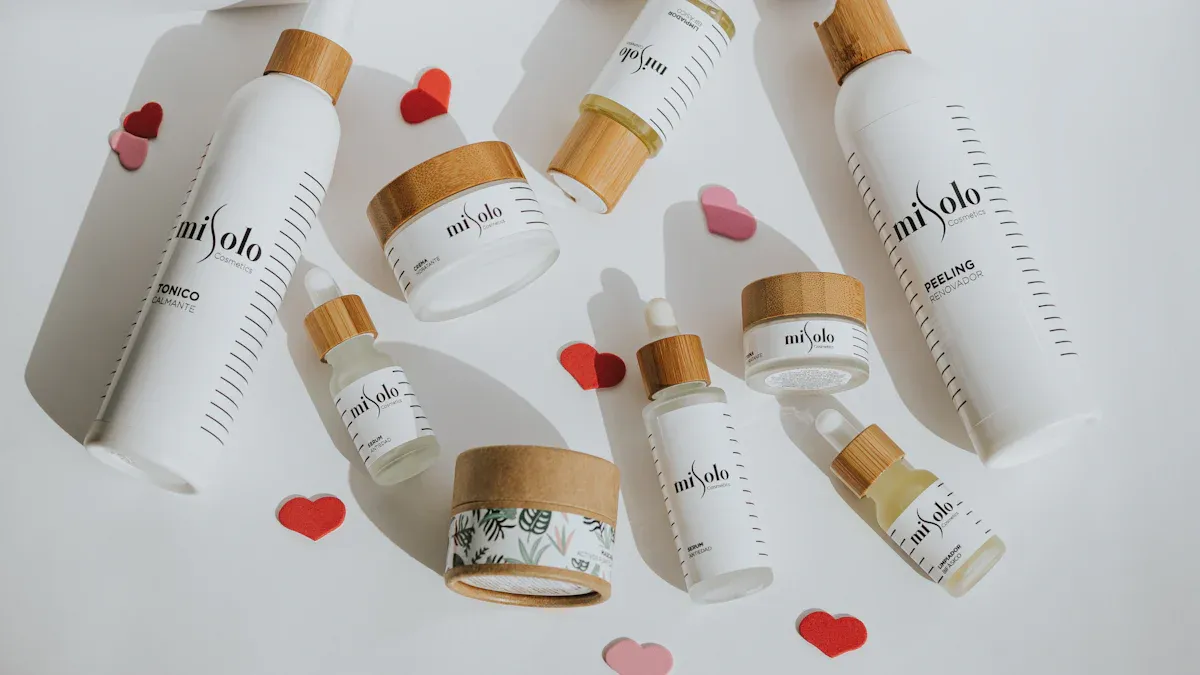
Build a Community Around Your Brand
Building a community around your beauty brand is one of the most effective ways to foster loyalty and maintain a cohesive brand image. When you create a space where your customers feel valued and heard, they’re more likely to stick with your products. Community-building isn’t just about selling—it’s about creating genuine connections. For example, brands like The INKEY List have seen a 110% higher engagement rate than the industry average by focusing on community-centered strategies.
Here’s why community matters:
About 60% of customers feel more loyal to brands they can interact with.
58% are more likely to buy from brands that maintain communication.
80% of companies report increased website traffic through community-building efforts.
You can start by encouraging user-generated content, like customers sharing photos of your products on social media. Hosting events, whether virtual or in-person, also deepens emotional connections. These efforts not only enhance engagement but also strengthen your brand experience.
Leverage Social Media for Cosmetic Branding
Social media is a powerhouse for cosmetic branding. Platforms like Instagram, TikTok, and Pinterest allow you to showcase your products, share tutorials, and connect with your target audience. Successful beauty brands like NYX Cosmetics and Glossier have mastered this by creating visually appealing content and engaging directly with their followers.
To make the most of social media, focus on these key strategies:
Monitor engagement rates to see how well your content resonates.
Use sentiment analysis to understand how your audience feels about your products.
Encourage user-generated content to build trust and authenticity.
Social media monitoring also helps you identify buyer personas and stay ahead of marketing trends. By analyzing audience preferences, you can tailor your content to meet their needs. This approach not only boosts engagement but also positions your brand as a leader in the beauty industry.
Offer Personalized Experiences to Strengthen Brand Loyalty
Personalization is the future of strong cosmetic branding. Customers want products and experiences tailored to their unique needs. Beauty brands like BABOR and No7 Beauty have embraced AI-powered tools to offer personalized skincare recommendations, resulting in higher conversion rates and increased average order values (AOV). For instance, BABOR saw a 442% uplift in conversions by using an AI Skin Coach.
Here’s how personalization can transform your brand:
Brand | Key Features of Personalization | Results |
|---|---|---|
Yon-Ka | AI-powered Skincare Advisor analyzing selfies | 1.9x higher conversion rate, 1.7x higher revenue |
A.S. Watson | AI Skin Advisor bridging online and offline experiences | 29% increase in AOV, 70% higher conversion rate |
By offering personalized experiences, you show your customers that you understand their needs. This builds trust and encourages repeat purchases, making your brand a go-to choice in the competitive beauty market.
Tips for Maintaining a Cohesive Branding Strategy
Regularly Audit Your Branding Efforts
To keep your branding on point, you need to regularly check if everything aligns with your vision. Think of it as a health check for your beauty brand. Are your logo, typography, and packaging still reflecting your brand’s personality? Is your messaging consistent across all platforms? These are the questions you should ask during a branding audit.
Auditing helps you spot inconsistencies that might confuse your customers. For example, if your social media posts feel playful but your website looks overly formal, it creates a disconnect. Regular reviews ensure that every element of your branding strategy works together seamlessly. Brands like Starbucks excel at this by curating a consistent customer experience across all touchpoints. You can follow their lead by setting clear brand guidelines and revisiting them often.
Use Branding Tools for Consistency
Branding tools are your best friends when it comes to staying consistent. They help you manage your visual elements, messaging, and even customer interactions. Tools like Canva or Adobe Creative Cloud make it easy to create designs that align with your brand identity. Meanwhile, platforms like Hootsuite or Buffer ensure your social media posts stay on-brand.
Why is this important? Inconsistent visuals or messaging can confuse your audience and weaken your brand recognition. By using these tools, you can streamline your marketing efforts and maintain a cohesive look and feel. High-quality packaging, for instance, not only reflects your brand identity but also influences how customers perceive your products. When everything looks polished and professional, it builds trust and loyalty.
Stay True to Your Brand Identity Amid Market Trends
Trends come and go, but your brand identity should remain steady. It’s tempting to jump on every new beauty trend, but doing so can dilute your message. Instead, focus on what makes your brand unique. Dr. Reed, a branding expert, emphasizes that a brand is more than just its visuals—it’s an asset that requires a clear and meaningful foundation.
Staying authentic helps you connect with your audience on a deeper level. Research shows that while mega-influencers have a wide reach, micro-influencers create stronger bonds with their followers. This highlights the importance of authenticity in your marketing efforts. By genuinely embracing your values and communicating them clearly, you can build lasting relationships with your customers.
Pro Tip: Don’t be afraid to adapt trends to fit your brand’s personality. For example, if sustainability is part of your identity, focus on eco-friendly trends that align with your values.
Cohesive branding design is the backbone of any successful skincare line. It helps your products stand out in the crowded beauty market while building trust and loyalty with your customers. By defining your brand identity, creating a unified visual style, and maintaining consistency across all platforms, you can craft a branding strategy that resonates with your audience.
Remember, every detail matters—from your packaging to your tone of voice. Stay true to your values and focus on engaging your customers. When you prioritize consistency and connection, your beauty brand will thrive in the long run.
FAQ
What is cohesive branding design, and why does it matter for skincare products?
Cohesive branding design creates a unified look and feel for your products. It helps customers recognize your brand instantly. For skincare, it builds trust and makes your products stand out in the competitive beauty market.
How can I make my skincare packaging more appealing?
Focus on designs that reflect your brand identity. Use colors, materials, and imagery that align with your values. Eye-catching packaging can attract customers and encourage repeat purchases, especially in the beauty industry.
How do I maintain consistency across different platforms?
Stick to your brand guidelines. Use the same logo, colors, and tone of voice everywhere—on social media, your website, and product packaging. This creates a seamless experience for your audience.
Can social media help build a cohesive brand image?
Absolutely! Social media lets you showcase your products, share tutorials, and engage with your audience. Platforms like Instagram and TikTok are perfect for connecting with beauty enthusiasts and strengthening your brand identity.
Why is personalization important for skincare branding?
Personalization shows customers you understand their needs. Tailored experiences, like customized skincare recommendations, build trust and loyalty. In the beauty world, this can set your brand apart and boost sales.

